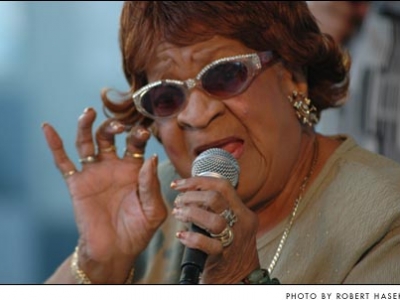Top library hopes for support
- Published: October 22, 2009
Call him crazy, but Greene County Public Library Director Karl Colón believes that the library ought to serve the taxpayers who support it. When the people said in a 2005 survey that they wanted more youth programs, better communication and a bigger collection, the Yellow Springs library started console game madness for teens, gussied up its newsletter and Web site and started ordering more books.
Under Colón’s direction since 2007, the five other Greene County branches did the same thing, which boosted last year’s circulation to 3.1 million items in a county with 155,000 residents (or 20 items per person). That’s one of the reasons the Greene County Library has been listed in the top 10 best public libraries of its size in the country by Thomas Hennen’s American Public Library Rating. And if Hennen thinks the library is great, Colón hopes that Greene County residents also recognize the value of their library on Nov. 3, when they cast their votes for the library levy.
Listed on the Nov. 3 ballot as Issue 7, the library is seeking a 1-mill five-year levy renewal that will not raise taxes beyond the current level, which voters approved in 2005 and which is set to expire in 2010. The levy provides 50 percent of the county library system’s current $7 million annual budget, and it will continue to cost a homeowner $30 a year for every $100,000 of property they own, according to Colón.
The Greene County library suffered a $2.8 million budget reduction last year due to recession-related state funding cuts to libraries across Ohio. The Greene County system made its own cuts judiciously, Colón said, by not replacing 16 staff members who left and holding down acquisitions to the necessities. That meant that the latest edition of the Peloponnesian War got sacrificed for the books local students need for their school work, Colón said.
“We now have less of the stuff that not a lot of people would use — we leave that to Cleveland,” Colón said, adding that local library patrons can get their copy from the Cleveland Public Library through interlibrary loan in two to five days. “I need to stock the books the kids will use when they say, ‘My term paper is due tomorrow,’ — I need to have that book.”
The budget reduction has also forced the library “with deep reluctance,” Colón said, to limit hours of operation to times of peak use, which for the Yellow Springs branch means Monday–Thursday, 10 a.m.–9 p.m.; Friday–Saturday, 10 a.m.–6 p.m.; and from September to May on Sunday, 1–5 p.m. (the top request the public made after the last election, which the library heeded).
And instead of trying to replace the state funding loss, the library recognized that the public is also hurting from the economic crisis and cannot afford to pay more in taxes at such a stressful time. Recently Colón ran into a patron who uses the library heavily and commented on the library funding.
“He said to me, ‘I would give you the shirt off my back — if I still had one,’ which told me that the community is suffering,” Colón said. “Sometimes it’s the right choice to make tough decisions, and ones that are reversible.”
The Greene County library is currently in a better financial position than some others because when the state warned them in 2008 of a potential 8 percent budget cut the following year, Colón ran his own assessment and prepared for cuts on the order of 20 percent. That estimate ended up being much closer to the actual 18 percent loss the library took from the state.
But even with those preparations and hours-of-operation cuts, the library projects that it can operate sustainably for another five years, until 2014, only if the levy renewal passes.
Colón believes Greene County, which has the highest per capita education rate in the state, and Yellow Springs residents in particular, love their library. The average Yellow Springer has the interest of an urban library user and checks out 44 items per year, over twice the county average, which says to Colón that “Yellow Springs really knows how to use its library.”
For less than the cost of one cup of coffee per family per week (about 90 cents a week for the average household), residents have the ability to check out 7 million books and can borrow as easily from the Cuyahoga Library as from the local branch.
“Pardon the expression, but we’ve got range!…And we think that’s crazy good value,” he said.
For that value, the Greene County Library still gets ranked in the top 10 alongside libraries of similar size, such as the Ann Arbor District Library in Michigan, the Santa Clara City Library in California, and the Salt Lake City Public Library in Utah. Thomas Hennen, a professional library director and planning consultant in Wisconsin, ranks libraries based on circulation, staffing and materials.
Following its “super secret plan” to read the survey and do what people want, the Greene County libraries were able to increase circulation by 25 percent and had over 48,000 people attend one or more library events in 2008. The library also reached about 5,000 kids remotely through its Book Mobile, with the conviction that for those who aren’t able to come to the library, the library should come to them.
Recognizing that each community branch is different, stepping up programming meant that while the Jamestown staff was instituting crafts-oriented events, the Yellow Springs staff created a music series, and the other branches held programs to suit their own communities. According to Colón, “People loved it.”
The purpose of the library is to serve the public, Colón said, so if patrons have suggestions or needs, he highly encourages people to speak up.
“We do our best to use our resources to get what people want, but we get an average of a million new titles a year, so we miss some,” he said. “If there’s something you know you want, call me up and tell me — that’s my job.”
The Yellow Springs News encourages respectful discussion of this article.
You must login to post a comment.
Don't have a login? Register for a free YSNews.com account.

Parkinsons.jpg)













No comments yet for this article.